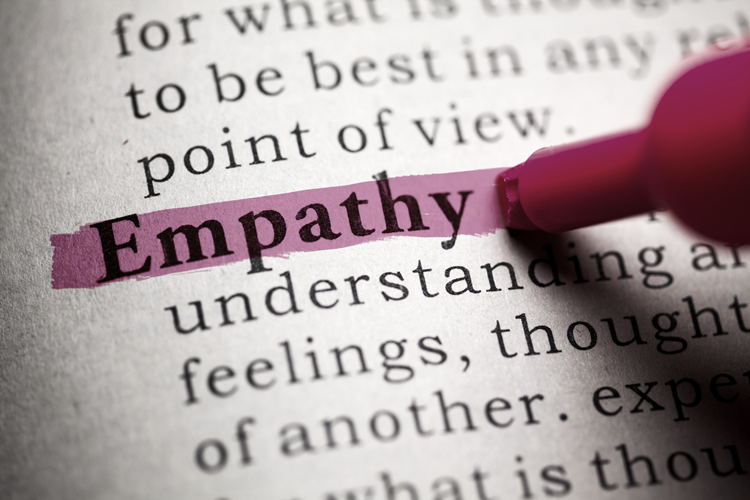Mastering the Art of Communication: Strategies for Conflict Resolution
Conflict is an unavoidable aspect of human interaction, manifesting in every realm of life—from familial relationships and friendships to professional settings. While the word 'conflict' often conjures negative associations, it's worth noting that not all conflicts are destructive. In fact, when approached correctly, conflicts can serve as invaluable opportunities for growth, offering insights into ourselves and the people around us.
It is also important to recognise that conflict isn't always marked by shouting matches, outward aggression or even outward signs of displeasure; it can also be a quiet, internal struggle, festering in the form of resentment, stress, or unspoken tension. This article aims to delve into the complexities of conflict, from understanding its roots and how our bodies and brains react, to mastering the art of communication and effective resolution strategies, while also highlighting the importance of self-care in the conflict management process.
The capacity to navigate conflicts effectively hinges largely on our communication skills. Whether it's understanding the underlying issues that spark tensions or actively listening to all parties involved, effective communication acts as the cornerstone for resolving disagreements and fostering healthier relationships.
In this article, we will explore the multi-faceted nature of conflict. We'll start by delving into the science behind it—what exactly happens in our brain and body when we find ourselves in a situation of conflict? Are there evolutionary reasons that might explain why humans are so susceptible to disagreements? Understanding the biological and historical roots can provide us with critical insights into why conflicts can escalate and how to better manage them.
From there, we'll transition into practical realms, discussing strategies for conflict resolution, the importance of active listening, and how to navigate different communication styles. Through this comprehensive approach, the goal is to equip you with the tools and knowledge needed to approach conflicts in a constructive and positive manner—whether disagreements or conflicts are at home, in the workplace, or any other setting.
The Science of Conflict: Brain, Body & Evolution
When faced with conflict, our brain and body go into a kind of alert mode. The amygdala, a region of the brain associated with emotions and survival instincts, gets activated. This often leads to the release of stress hormones like cortisol and adrenaline, initiating what is commonly known as the "fight-or-flight" response. As a result, you may experience physical symptoms like an increased heart rate, tightened muscles, or heightened alertness. These responses prepare you to face a 'threat,' even when that threat is an emotional or verbal disagreement rather than a physical danger.
While these physiological responses might have evolutionary benefits, they come with contemporary drawbacks. Chronic activation of the stress response system can lead to various health issues such as anxiety, depression, and even more serious conditions like heart disease and a weakened immune system. This is why persistent, unresolved or poorly managed conflicts can have a significant impact not only on our happiness in the short term but also on our mental and physical wellbeing in the long term.
From an evolutionary standpoint, humankinds’ propensity for conflict has deep roots. Whilst this has undoubtedly led to much devastation and bloodshed over the course of our evolution, not all conflict has been bad. Conflict also often necessitated critical thinking and problem-solving, skills that were essential for the survival of early human communities. Moreover, disagreements within a community could lead to important societal developments, including the establishment of norms, roles, and hierarchies. While conflict was, and still is, stressful, it played a pivotal role in human advancement, shaping cultures, and driving innovations.
Understanding the Root of Conflicts
Conflict is often the manifestation of deeper issues, be it differences in values, unmet expectations, or simple misunderstandings. While the immediate cause might seem trivial, the underlying root often has a more complex origin. Understanding these foundational causes is the first step toward effective resolution and, ultimately, healthier relationships.
a. Misunderstandings
In an age of rapid digital communication, misunderstandings are more prevalent than ever. Humans have evolved to derive meaning from the tone of peoples’ voices and the expression on their faces, important signals that are lost in digital communications. The tone of a message is easily misconstrued in text messages or emails, but even in face-to-face interactions, our words can be taken out of context. When a conflict arises, consider first if it's a matter of misunderstanding. Clarification can often defuse a tense situation quickly.
b. Differing Values and Beliefs
One of the more complex sources of conflict lies in our values and beliefs. These are shaped by our upbringing, culture, experiences, and even innate personality traits. Conflicts arising from differences in fundamental values can be difficult to resolve but acknowledging that these differences exist is crucial. Sometimes, the goal is not to change another's values but to find a way to coexist respectfully.
c. Unmet Expectations
Often, we enter into interactions with a set of expectations. Whether these expectations are articulated or unspoken, not meeting them usually leads to conflict. For example, you might expect punctuality in a professional setting, or emotional support from a friend or partner. When these expectations are not met, disappointment and conflict arise. Openly discussing these expectations can pre-empt many potential disputes.
d. Emotional and Psychological Triggers
Sometimes, the trigger for conflict is deeply emotional or psychological, perhaps rooted in past experiences or traumas. These triggers can ignite strong reactions that seem disproportionate to the immediate issue at hand. Being aware of your triggers, and recognising the possibility of triggers in others, can be a powerful tool for de-escalating conflicts that can seem to flare up suddenly and intensely.
By recognising and understanding the root causes of conflict, we can tailor our conflict resolution strategies more effectively. It can allow us to see the situation more clearly and to approach it from a place of understanding rather than reactiveness.
The Power of Active Listening
Listening should be an active process that fully engages the mind, instead of just being a passive act of receiving information, yet it's surprising how many situations are able to escalate into conflict simply because people involved aren't truly listening to each other.
a. Passive vs. Active Listening
In passive listening, we may hear the words, but we don't necessarily absorb their full meaning or nuances. It's the kind of listening we do when we're multitasking or preoccupied with our own thoughts. In contrast, active listening involves giving your complete attention to the speaker, acknowledging their words and feelings, and providing feedback. It's about making a conscious effort to hear not just the words, but also to understand the complete message being sent.
b. The Significance of Active Listening
Active listening serves multiple purposes in conflict resolution. Firstly, it assures the other party that they are being heard, which in itself can be a potent de-escalator in tense situations. Secondly, it gives you the opportunity to understand the issue more deeply, which can be critical for resolving it. Finally, active listening often reveals underlying issues that may be the root cause of the conflict, providing a clearer path to resolution.
c. How to Cultivate Active Listening
- Be Present: Put away distractions like phones and focus entirely on the conversation.
- Show Empathy: Use body language, such as nodding or maintaining eye contact, to show that you are engaged.
- Avoid Interrupting: Allow the speaker to complete their thoughts before you respond.
- Ask Clarifying Questions: If something is unclear, ask questions to ensure you fully understand the point being made.
- Reflect and Summarise: Repeat back what you've heard in your own words to confirm both parties are on the same page.
By embracing active listening, you're not only enabling yourself to resolve conflicts more effectively, you're also equipping yourself with a powerful tool to building stronger, more meaningful relationships in all areas of life. This skill, while simple in theory, takes practice to master, but the payoff is invaluable: better understanding, less conflict, and more harmonious interactions with those around you.
Navigating Different Communication Styles
Effective conflict resolution doesn't just rely on listening, it's also about how you convey your own thoughts, feelings, and opinions. This is where communication styles come into play. Not all communication styles are created equal, and using the wrong style has the potential to escalate a conflict rather than resolve it. In this section, we'll explore some different communication styles and how they can impact conflicts.
a. Identifying Communication Styles
- Aggressive Communication: This style often involves speaking in a loud and overbearing manner, frequently interrupting others, and may include blame or accusations.
- Passive Communication: Here, individuals avoid expressing their own needs or opinions, opting to yield to the desires of others, which can lead to internalised stress and resentment.
- Passive-Aggressive Communication: This involves avoiding direct confrontation but expressing discontent or aggression indirectly, often in a way that is confusing or unclear to the other party.
- Assertive Communication: This is the ideal style for conflict resolution, where individuals express their needs and opinions openly, honestly, and respectfully.
b. Challenges of Each Style
Understanding and adapting your communication style is essential for effective conflict resolution, as each style comes with its own challenges:
- Aggressive communicators may dominate conversations but rarely resolve conflicts satisfactorily.
- Passive communicators might avoid conflicts but are also prone to building up resentment.
- Passive-aggressive communicators leave others confused and don’t address the root issue.
- Assertive communicators may struggle with others who are not used to or open to this style of communication.
c. The Value of Assertive Communication
Assertive communication is the most balanced and respectful way to engage in dialogue. Unlike aggressive communication, it does not involve trampling over someone else's opinions to assert your own. Conversely, unlike passive communication, it involves clearly stating your needs without sacrificing your self-respect. It takes into account the dignity and respect of all parties involved, making it the most effective communication style for resolving conflicts.
d. Steps to Cultivate Assertive Communication
- Be Clear and Concise: Use "I" statements to express your views.
- Maintain Calm: Emotional regulation is key; try to keep your tone neutral.
- Show Empathy: Acknowledge the other person’s feelings without conceding your position.
- Seek Mutual Understanding: Strive for a resolution that respects the needs and wants of all parties involved.
Strategies for Effective Conflict Resolution
Understanding the root causes of conflict and the nuances of communication is crucial, but what are the concrete steps you can take to actually resolve a disagreement? In this section, we'll outline various strategies that you can employ to effectively manage and resolve conflicts in a variety of settings.
a. Taking a Time-Out
Emotions can run high during a conflict, making constructive conversation difficult. Sometimes the best immediate strategy is to temporarily disengage and allow all parties time to cool down. This time-out period can provide a crucial window for self-reflection and emotional regulation. It can provide much needed time to de-escalate our stress response and approach the situation from a more rational and less emotional perspective.
b. Frame the Conversation
Before diving into the crux of the issue, set the stage for a constructive conversation. Use phrases like "I'd like to understand your point of view better" or "Can we find a solution that works for both of us?" to set a collaborative tone.
c. Use Problem-Solving Techniques
Once the stage is set, employ classic problem-solving techniques:
- Identify the problem without blame.
- Generate possible solutions.
- Evaluate these solutions.
- Agree on a course of action.
- Implement the solution.
- Review and adjust as necessary.
d. Leverage Mediation
In particularly difficult or complex conflicts, a third-party mediator, whether that is a friend, a colleague or even an external party, can often provide invaluable assistance in resolving conflict. The mediator doesn’t take sides but helps facilitate the conversation to arrive at a mutual agreement.
e. Emotional Intelligence
Understanding and managing not just your own emotions, but also the emotional landscape of others involved in the conflict, can significantly aid resolution efforts. Employing empathy and self-awareness can be crucial to navigating the emotional intricacies of a situation.
f. The Importance of Apology
Never underestimate the power of a sincere apology. Acknowledging your mistakes or the pain you may have cause, even when it is unintentional, can go a long way in mending strained relations.
g. Know When to Walk Away
It's also important to understand that not all conflicts can be resolved, and that’s okay. Sometimes the best resolution is to agree to disagree and to walk away with mutual respect still intact.
Effective conflict resolution is not a one-size-fits-all solution but involves a set of versatile skills and strategies that can be adapted to various situations. The aim is not just to ‘win’ an argument, but to reach a mutual understanding or compromise that respects the dignity of all parties involved.
Self-Care in Conflict Management
While addressing the external manifestation of the conflict can seem all encompassing, it is also important to take care of yourself in the process. Conflicts can be emotionally draining and physically exhausting, which can have a detrimental and potentially outsized impact on your happiness and overall wellbeing.
The stress hormones that flood your system during a disagreement can lead to feelings of anxiety, sadness, or anger. As discussed previously, chronic activation of your stress response can stress hormones can lead to a variety of health problems, ranging from insomnia and digestive issues to more serious conditions like cardiovascular disease.
Given the emotional and physical toll that conflict can take, incorporating self-care strategies is crucial. These can include:
- Physical Exercise: Physical activity is a proven stress reducer. Engaging in moderate to high-intensity exercise for at least 20 to 30 minutes can help de-escalate the body's stress response by reducing levels of the stress hormone cortisol and increasing the release of endorphins, which are natural mood lifters.
- Mindfulness and Relaxation: Techniques like deep breathing, meditation, or mindfulness can help you remain calm and de-escalate your stress response. Incorporating just 5 to 10 minutes of mindfulness exercises into your daily routine, such as focused breathing or a quick body scan, can not only significantly reduce stress but also foster increased awareness of your thoughts and feelings, which can be invaluable when managing conflict.
- Healthy Boundaries: Learning to set and communicate your boundaries effectively—such as knowing when to say 'no' or when to take a step back from a conflict—can significantly reduce stress and improve your emotional wellbeing, allowing you to engage in conflicts more constructively.
- Seek Support: Sometimes talking with a friend, family member, or accessing external resources like a workplace Employee Assistance Program (EAP) can offer valuable emotional and strategic support, enabling you to navigate conflicts more effectively and reduce stress.
The Interplay Between Self-Care and Conflict Resolution
Importantly, practicing self-care isn’t just beneficial for you; it can also improve your conflict resolution skills. A well-rested, emotionally balanced individual is more likely to approach conflicts with the patience, understanding, and empathy necessary for constructive resolution.
Don't see self-care as a luxury or an afterthought; make it a priority. Making self-care a priority empowers you to navigate conflicts with greater effectiveness as well as foster more positive relationships. Effective conflict management is not solely about resolving external disagreements; it's also about maintaining your own wellbeing. Through self-care, you're not just taking care of yourself but also improving your capacity to handle conflicts in a thoughtful and effective manner.
Takeaways
As we wrap up this comprehensive look at conflict management, it’s important to reiterate that conflict is an unavoidable part of human interaction. However, it doesn't have to be a destructive force. Armed with the right tools, techniques, and mindset, you can navigate through conflicts in a way that not only resolves the issues at hand but also contributes to personal growth and stronger relationships.
Navigating the intricacies of conflict management can be challenging and may cause some discomfort, but it is crucial for personal growth and stronger relationships. Effective conflict management boils down to a few key principles: empathy, communication, strategy, and self-care. Mastering these elements won't just make you adept at handling conflicts; it also has the potential to enrich your relationships and enhance your happiness and wellbeing.
Share this
You May Also Like
These Related Stories

Finding The Balance: Managing Stress and Building Resilience

Mind, Body & Music : The benefits of music for health and wellbeing




